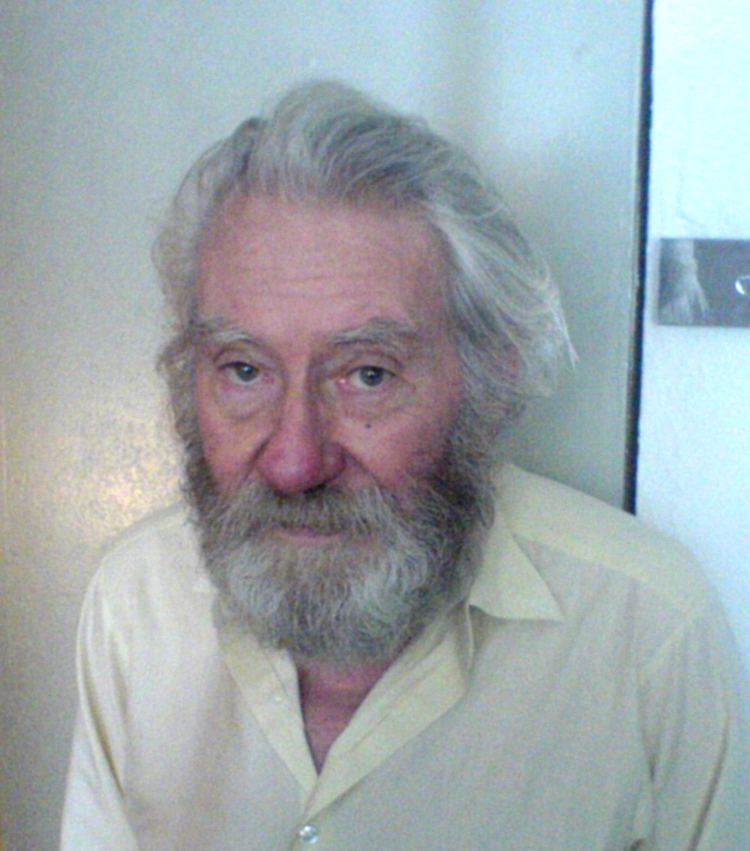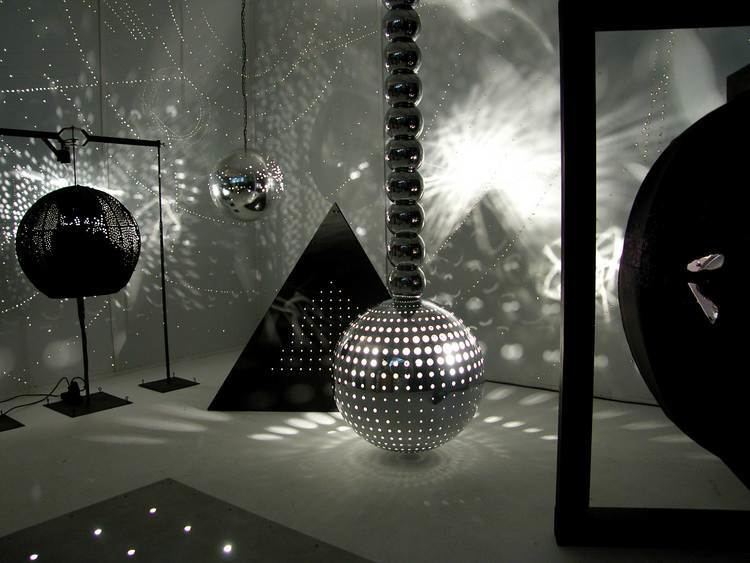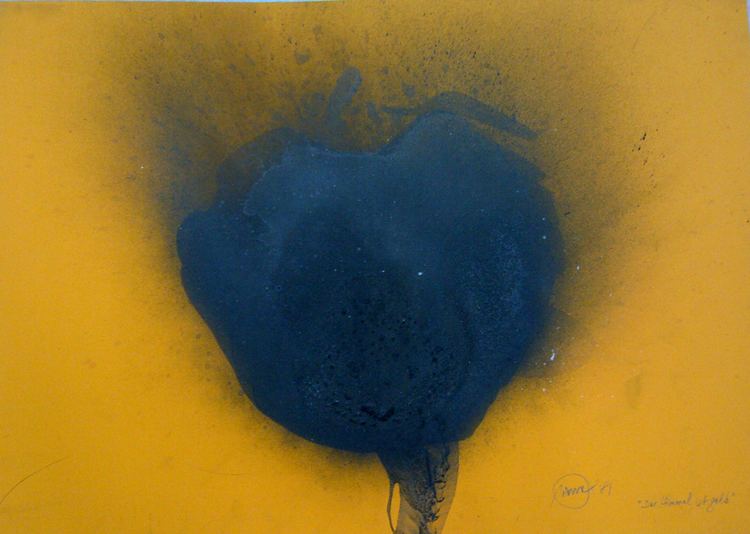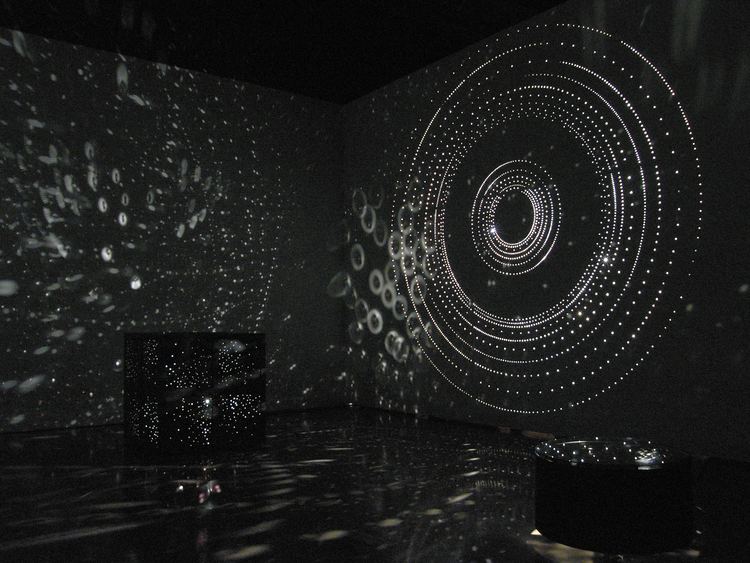Nationality German Role Artist | Name Otto Piene Movement Zero (art) Books More Sky | |
 | ||
Died July 17, 2014, Berlin, Germany Known for | ||
Otto piene at neue nationalgalerie berlin
Otto Piene (18 April 1928 – 17 July 2014) was a German artist specializing in kinetic and technology-based art. He lived and worked in Düsseldorf; Cambridge, Massachusetts; and Groton, Massachusetts.
Contents
- Otto piene at neue nationalgalerie berlin
- otto piene lichtballett at mit list visual arts center 2011
- Biography
- Works
- Exhibitions
- Collections
- Recognition
- Art market
- Publications
- References

otto piene lichtballett at mit list visual arts center 2011
Biography

Otto Piene was born in 1928 in Bad Laasphe and was raised in Lübbecke. Between 1949 and 1953 he studied painting and art education at the Academy of Art in Munich and the Kunstakademie Düsseldorf. He was lecturer at the Fashion Institute in Düsseldorf. From 1952 to 1957 he studied philosophy at the University of Cologne.

He was a Visiting Professor at the University of Pennsylvania beginning in 1964. From 1968 to 1971, he was the first Fellow of the MIT Center for Advanced Visual Studies (CAVS), founded by György Kepes. In 1972, he became a Professor of Environmental Art at MIT. In 1974 he succeeded Kepes as director of the CAVS, in which position he served until September 1, 1993.

Piene and Heinz Mack founded the group ZERO in 1957. This group consisted of artists who wanted to redefine art after World War II. By the 1960s they were internationally known, especially in Japan, Americas, and throughout Europe. Members of the group included Piero Manzoni, Yves Klein, Jean Tinguely, and Lucio Fontana. Piene and Mack also published ZERO Magazine from 1957 to 1967.

With Günther Uecker, Heinz Mack and Mattijs Visser he founded in 2008 the international ZERO foundation. The foundation has the ZERO archives from the three Düsseldorfer artists as well as documents and photos from other related artists.

Piene died on July 17, 2014 while in a taxi on his way to continue preparations for a "Sky Art Event" at Neue Nationalgalerie. His survivors included his wife, the former Elizabeth Goldring, a poet and artist who also worked on Centerbeam, as well as four children, a stepdaughter and five grandchildren.
Works

In 1957, Piene and Heinz Mack founded the group ZERO. In 1961, Günther Uecker joined the group. In 1957 Piene developed the Grid Picture, a type of stencilled painting made from half-tone screens with regularly arranged points in single colours (yellow, silver, white or gold), for example Pure Energy (1958; New York, MOMA). Piene's work then developed in a variety of forms. The Lichtballette ("light ballet") (from 1959) were a development of the Grid Pictures: light from moving torches was projected through grids, thus extending and stimulating the viewer's perception of space. This series of works is inspired by László Moholy-Nagy's Light Space Modulator (1930) and Fernand Léger's Ballet Mécanique (1924).
Also in 1959, the combination of these grids with sources of fire (candles, gas-burners) produced smoke-traces and fire paintings, in which the paint was burnt. Piene created these Rauchbilder ("smoke pictures") as a reference to elementary natural energies. In the "fire paintings", he lightly burned a layer of solvent on pigmented paper, developing organic forms from the remnant, or the soot. Throughout the remainder of his career he continued the practice of making "smoke pictures". Fire and smoke (their traces) are important elements in these pictures. Silver Fire from 1973, in the collection of the Honolulu Museum of Art, is an example of a "smoke picture". He also experimented with multimedia combinations. In 1963, together with Günther Uecker and Heinz Mack, he became a spokesman of Neuen Idealismus ("the new idealism"). Piene is also noted for having explored new uses for broadcast television. In 1968, along with Aldo Tambellini, he produced Black Gate Cologne, which is cited as one of the first television programs to have been produced by experimental visual artists.
1967 marked the beginning of Piene's involvement with Sky art, a term he coined in 1969 and which allowed him to use landscape and cities themselves as the focal point of his work. For the closing of the 1972 Summer Olympics in Munich, Piene created the sky work Olympic Rainbow, made up of five differently coloured helium-filled polythene tubes, each one 600 m long. Between 1981 and 1986 Piene organized four Sky art conferences in the USA and Europe.
He took a stab at industrial design in the 1970s with a 500-piece run of the upscale Suomi tableware by Timo Sarpaneva that Piene decorated for the German Rosenthal porcelain maker's Studio Linie.
Working as the director of the CAVS at the Massachusetts Institute of Technology, Piene collaborated in the design of the kinetic sculpture performance Centerbeam first exhibited in Kassel, Germany in 1977. Later mounted on the National Mall in Washington, it featured laser-projected images on moving steam screens, solar-tracked holograms, a 144-foot (44-metre) water prism and helium-lifted sky sculptures. The C.A.V.S. allowed artists to work using sophisticated techniques and scientific partnership, promoting a highly collaborative environment.
In 1978, Piene was commissioned by the Smithsonian Art Collectors Program to create a print to benefit the educational and cultural programs of the Smithsonian Associates. The print was to commemorate a Washington, D.C. festival much like the 1977 exhibition in Kassel. Three lithographs resulted, all titled, Centerbeam, one of which hangs in the ongoing exhibition, Graphic Eloquence, in the S. Dillon Ripley Center in the National Mall.
In 1999, Piene presented his idea of a statue called Das Geleucht in the Ludwig Galerie Schloss Oberhausen for the first time. That monument in the form of a mining lamp ought to be built on the spoil tip Halde Rheinpreußen in Moers, with illumation at night. That project enthused the publicity but as recently as 2006 sponsors were found. Until 2007, the 30-metre (98-foot) high monument lightened the spoil tip every night.
Exhibitions
Piene had his first solo exhibition at Galerie Schmela, Düsseldorf, in 1959. With Light Ballet, he debuted at Howard Wise Gallery, New York, in 1966. He represented Germany at the Venice Biennale in 1967 and 1971, and exhibited at documenta in Kassel, Germany, in 1959, 1964 and 1977. In 1985, he exhibited at the São Paulo Biennial.
Piene's solo exhibitions include retrospectives at the Kunstmuseum im Ehrenhof, Düsseldorf, in 1996 and at the Prague City Gallery Prague, in 2002, and a show at the Museum am Ostwall, Dortmund in 2008-2009.
Recent museum solo shows include the MIT List Visual Arts Center, Cambridge (2011), Museum Für Neue Kunst, Karlsruhe (2013), Museum Kunstpalast, Düsseldorf (graphic work) (2013), Neue Nationalgalerie, Berlin (2014), Langen Foundation, Neuss (2014) and LWL-Museum für Kunst und Kultur, Münster (2015).
In 2014, the Guggenheim Museum in New York held an exhibition featuring a survey of the work of the ZERO group, that included many works by Piene.
Collections
Piene's works are in numerous museum collections around the world, among them the Museum of Modern Art in New York, the Walker Art Center in Minneapolis, the National Museum of Modern Art in Tokyo, the Stedelijk Museum in Amsterdam and the Centre Georges Pompidou in Paris.
Recognition
The University of Maryland, Baltimore County awarded Piene an honorary Doctor of Fine Arts in 1994. In 1996, he received the Sculpture Prize of the American Academy of Arts and Letters, New York. In 2003, he became the recipient of the Leonardo da Vinci World Award of Arts in recognition of his artistic and innovative accomplishments. After his death, he was praised by Germany’s minister of culture, Monika Grütters, who said that "many of his highly aesthetic works in public space were also a signal against the inhospitality of our cities."
Art market
Sotheby's established a first record for works by Otto Piene when it sold Rauchbild, a 1961 oil and charcoal on canvas from the Lenz-Schoenberg collection, for £223,250 ($329,000) in February 2010. Only a few months later, Piene's Kleine Sonne (1963–64) was sold for £85,250 ($126,937) by the Lauffs Collection at Christie's London.
